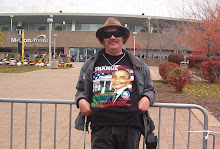Why this particular novel, Sweetheart of the Lonesome Boulevard, at this particular time?
Post-modern fiction has been with us for nearly sixty years. Despite its programmatic eschewal of the traditional, it has become both a tradition in itself and a part of the larger literary tradition. None but a few academic troglodytes would deny that such works as Pale Fire, Slaughterhouse Five, The Crying of Lot 49, The Golden Notebook, One Hundred Years of Solitude, The Sot-Weed Factor, or Beloved belong to the canon, whether one defines it in Arnoldian terms as “the best of what has been thought and said” or more practically as that which is frequently taught. Hence it is perfectly valid to ask why the world needs one more novel characterized by a non-linear plot, multiple narrators, verbal jouée, epistemological irony, subversive historical allusions, imagery from popular culture, and elements of metafiction and magical realism.
Sweetheart of the Lonesome Boulevard employs all these devices and techniques. All novelists write within a tradition, and I am not ashamed to admit that post-modernism is the one in which I work. Yet every tradition limits as much as it liberates, and the true test of a novelist’s creativity is the extent to which his or her work is able to push, perhaps even transcend, the boundaries of the tradition in which that work is composed. Sweetheart is a post-modern novel, but in it I have sought to make something and do things that the typical post-modern novel is not and the typical post-modern novelist does not do.
Though Dorf and the subsidiary narrators of Sweetheart often experience life in as fragmented, random, and meaningless a manner as Burroughs’ narrator in Naked Lunch, the novel itself offers a vision of wholeness and pattern. While Dorf’s rarely sees beyond his lonesomeness, Sweetheart differs from, for example, Breakfast of Champions in that human interconnectedness is apparent to the reader despite the reality of individual alienation. Brand-names and pop-culture references abound in Sweetheart as much as in White Noise, but not in the presupposition that tawdriness is all there is, for Dorf and several other characters experience infrequent but genuine epiphanies of genuine beauty. Finally, while Dorf and the other narrators find the story as impossible to tell as the stories of Pale Fire or Gravity’s Rainbow, the story nevertheless gets told.
Wholeness despite fragmentation, connectedness despite alienation, beauty despite a culture of ugliness, and a story despite the impossibility of telling it: these things set this novel apart from other postmodern novels. In future posts I shall discuss each of these aspects in more detail. In the meantime, you may wish to consider that Sweetheart of the Lonesome Boulevard is an anxious, hopeful book for an anxious, hopeful age.
Peace,
David Van
Subscribe to:
Post Comments (Atom)


No comments:
Post a Comment